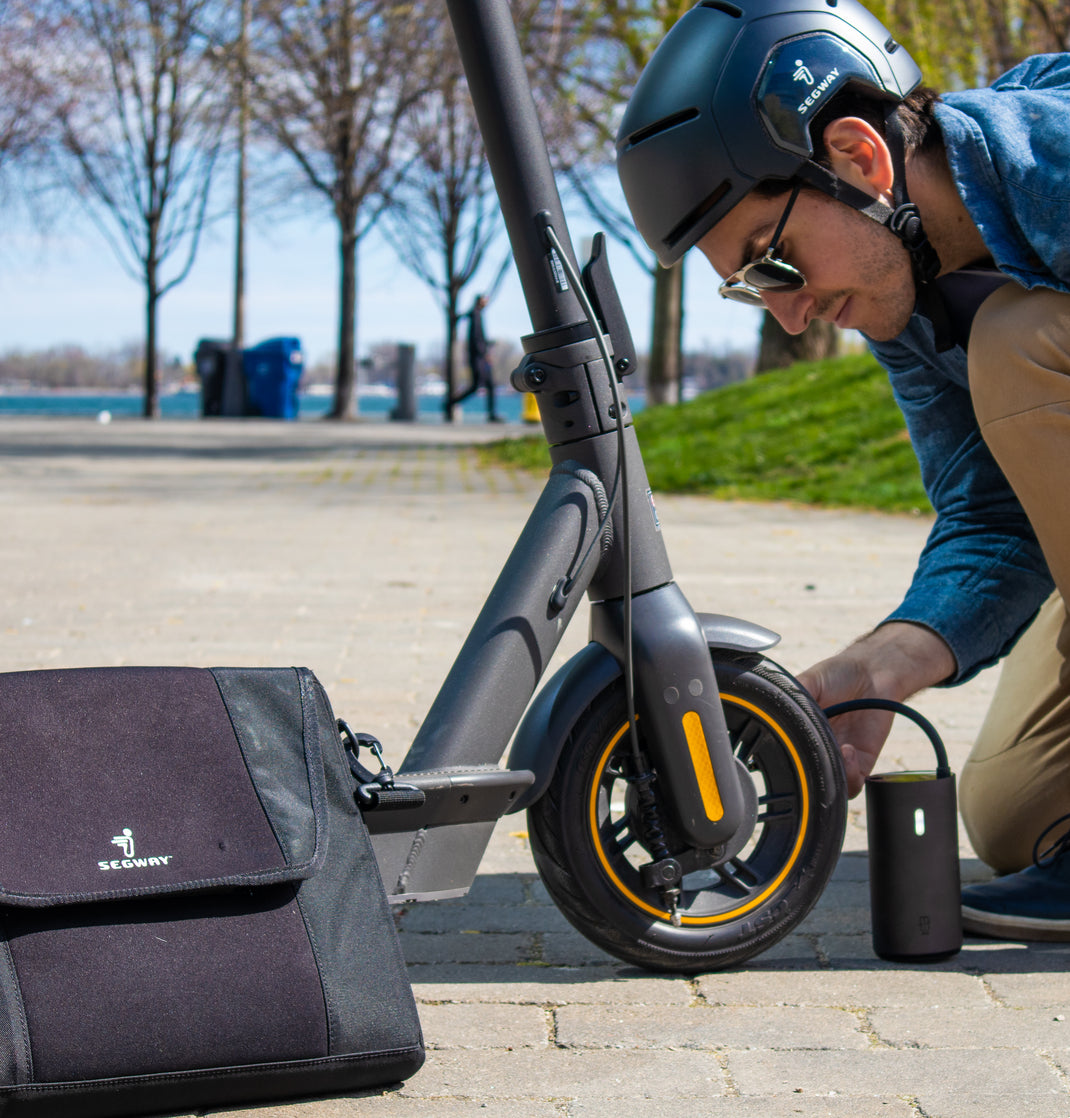Maintaining your Segway Ninebot electric scooter in top condition is essential for a smooth and enjoyable riding experience. One crucial aspect of scooter maintenance is ensuring that the tires are properly inflated. There are three types of scooter tires: tubeless, tubed, and solid. Depending on the model you own, you may need to periodically check and inflate your tires.

A deflated tire not only affects your ride quality but also poses a significant safety risk. Moreover, it may cause permanent damage to your tires, necessitating a complete replacement. In this guide, we'll walk you through a step-by-step process of inflating your Segway Ninebot electric scooter's tires for a safe and smooth ride.
Looking to add some electric zing to your daily commute? T-Dot Wheels has got you covered with our awesome selection of Segway Ninebot Electric Scooters! Trust us, these bad boys will have you zipping around town with style and ease. Don't miss out on the fun - come check out our selection today 🛴
Step 1: Locate the Valve Stem
The first step in inflating your scooter's tires is finding the valve stem, which is a small, round protrusion on the tire used for inflation. Typically, the valve stem is located on the tire's side and may be concealed by a valve cap.

Step 2: Remove the Valve Cap
Once you've identified the valve stem, the next step is to remove the valve cap. This small, round cap is screwed onto the valve stem and can be unscrewed by turning it counterclockwise.
Step 3: Attach the Pump
After removing the valve cap, you can connect the pump to the valve stem. Most pumps have a connector that attaches to the valve stem. Press the connector onto the valve stem until it clicks into place.

Step 4: Start Pumping
With the pump securely connected to the valve stem, you can begin pumping. Use the pump handle to inflate the tire to the recommended pressure, which can be found on the tire's sidewall or in the owner's manual.
Step 5: Monitor the Pressure
As you inflate the tire, keep an eye on the pressure using the pump's built-in pressure gauge or a separate tire gauge. When the tire reaches the recommended pressure, stop pumping.
Step 6: Replace the Valve Cap
After inflating the tire, replace the valve cap by screwing it back onto the valve stem.
Step 7: Repeat the Process for the Other Tire
Repeat the entire process for the other tire on your Segway Ninebot electric scooter.
Be sure to check out our video tutorial on How To Pump The Tires On Your Segway Scooter!
Maintaining Optimal Tire Pressure
It's vital to check your tire pressure at least once a month or before each ride, especially if you frequently use your scooter. Proper tire pressure ensures the safety and performance of your Segway Ninebot electric scooter.
For the most accurate pressure measurement, we recommend using a floor pump with a pressure gauge or an electric digital pump. By following these steps, you can effortlessly inflate your Segway Ninebot electric scooter's tires, ensuring a safe and smooth ride.

Proper tire inflation is essential for the safety, performance, and longevity of your Segway Ninebot electric scooter. By regularly checking and maintaining the correct tire pressure, you can prevent damage to your tires and guarantee a comfortable and enjoyable riding experience.
If you have further questions about inflating your Segway Ninebot tires or other scooter maintenance concerns, feel free to reach out to one of the E-Scooter experts at T-Dot Wheels: https://tdotwheels.com/pages/contact-us-1
For those seeking an efficient and stylish way to commute, T-Dot Wheels offers a remarkable selection of Segway Ninebot Electric Scooters. With our top-notch products, you can be sure to zip around town with ease and comfort. Don't let the opportunity pass you by; explore our collection today and find the perfect scooter for you.

